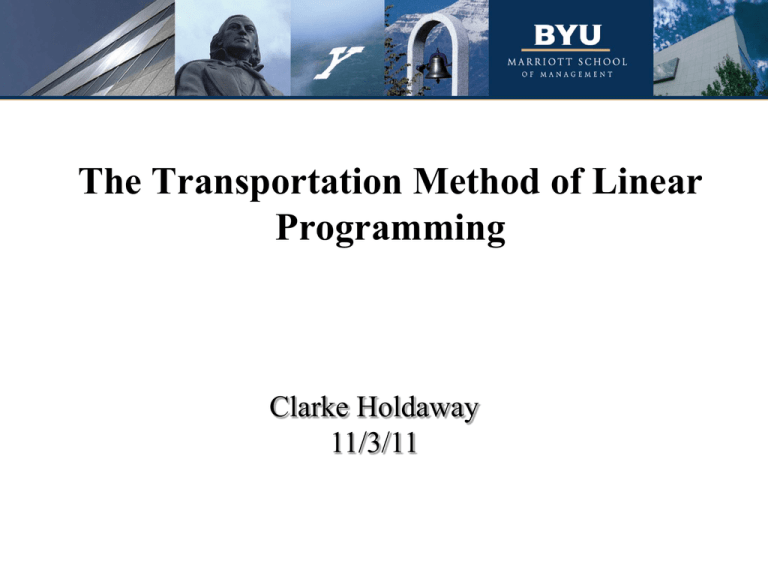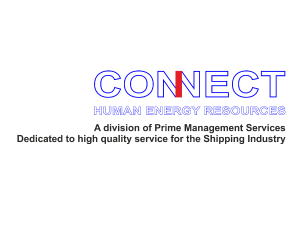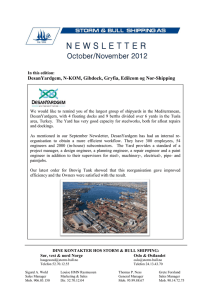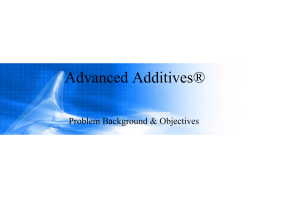The Transportation Method of Linear Programming
advertisement

The Transportation Method of Linear Programming Clarke Holdaway 11/3/11 Presentation Overview • The Transportation Method of Linear Programming defined • Why it can be useful • How it works • Real life example • Exercise • Summary • Brainstorming Exercise • Recommended readings list The Transportation Method of Linear Programming • Definition: A special linear programming method used to solve problems involving transporting products from several sources to several destinations How is the Transportation Method of LP Useful? • • • • • Adaptable Flexible Very fast Easy Lean How it Works • A linear function subject to constraints is used to minimize an objective, in this case cost • The constraints that must be met are: – supply must meet demand – supply cannot exceed capacity • Microsoft Excel’s Solver How it Works: An Example • You are the logistics manager for a company that manufactures widgets. • Plants in Torrance, Fresno, and Mexicali can supply 180, 300, and 240 pallets of widgets. • Stores in Riverside, San Diego, Oakland, and Phoenix demand 280, 80, 200, and 140 pallets of widgets each. Step 1: Table Set-up • Using Microsoft Excel, set up a from/to shipping table. • Now, on the right of your from/to table add columns for supply capacity, pallets supplied, and excess supply. • Input the widget supply capacity for each plant. • Input a simple formula in the pallets supplied cell that sums the from/to cells for each plant location. • Next, in the excess supply box for each plant you want to input a simple formula subtracting the pallets supplied from the supply capacity. • Next, we want to add demand, shipped, and cost rows on the bottom of the table. • Input the demand that corresponds to each store location in the demand row. • In each shipped cell, enter a formula that adds up the three cells for the corresponding store location. Step 2: The Cost Formula • This is one of the trickiest parts. You are going to create a large formula in the cost cell. You will need the cost table. • In the formula, you will multiply the cost per pallet shipped of every from/to intersection by the corresponding from/to intersection in the shipping table. • You will do this for every intersection and add all of the products together. • It should look something like this at first. See how the cost table from/to intersection(C29) is multiplied by the shipping table from/to intersection(C20). • That product is then added to the next intersection product (C29*C20 + C30* C21) • You continue this formula until you have covered every cost and shipping intersection product. • It should look like this: Step 3: Solver • Now that the shipping table and cost formula are all set up, we will use Microsoft Solver to optimize our shipping and minimize the cost. 1. Set your objective as the cost cell. 2. Set to Min 3. By changing variable cells: all of the from/to shipping cells 4. Now we need to indicate two constraints. a. customer demand must equal shipped b. pallets supplied must be <= supply capacity 5. We need to make sure two options are set a. check: make unconstrained variables non-negative b. solving method: Simplex LP 6. Click solve! • Solver has optimized our shipping and the minimum cost is $63,100. A Real World Example: Supply and Distribution Options in the Oil Industry (Balasubramanian) Exercise • Harlow, Guildford, Cheltenham, and Norwich can supply 1,587, 570, 908, and 1,247 pallets of widgets each. • Cardiff, Telford, Rotherham, and Harrogate demand 1,285, 875, 1,452, and 642 pallets of widgets each. • When optimized, what is the minimum cost? Summary • The transportation method of linear programming is very useful • Flexible • Fast • Adaptive • Lean Brainstorming Exercise • Now that you are familiar with this tool, take 5 minutes to individually brainstorm how you can use this method. • Next, take 10 minutes to share your ideas and continue brainstorming with your group. • Each group will then present its best ideas. Readings List • Jacobs, F. R., & Chase, R. B. Operations and Supply Management: The Core. • Washington, S. P., Karlaftis, M. G., & Mannering, F. L. Statistical and Econometric Methods for Transportation Data Analysis, Second Edition. • Belenky, A. Operations Research in Transportation Systems: Ideas and Schemes of Optimization Methods for Strategic Planning and Operations Management.











